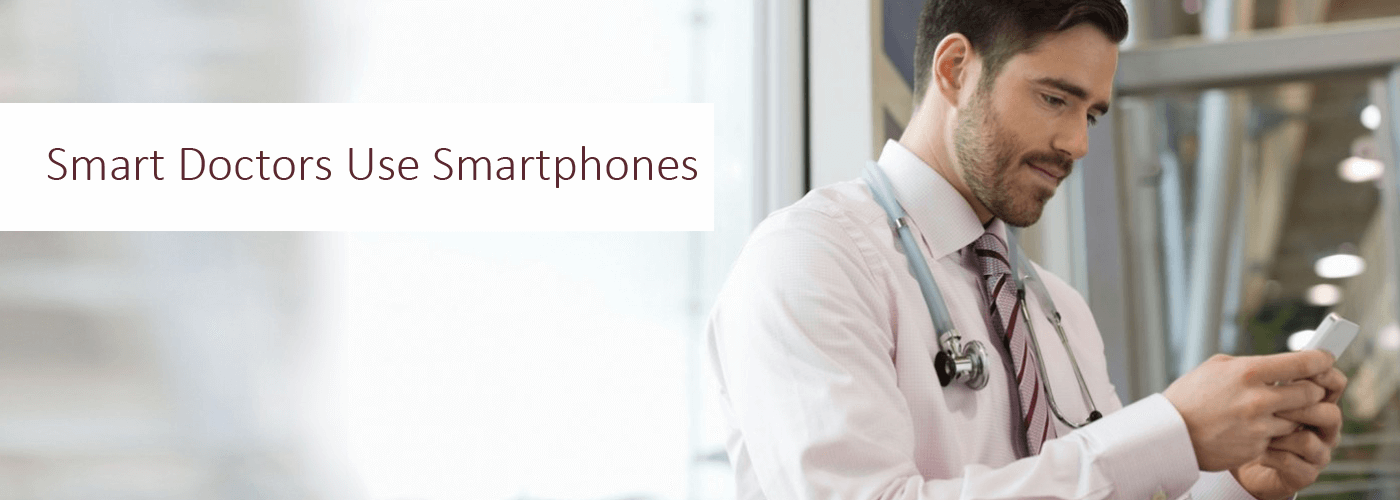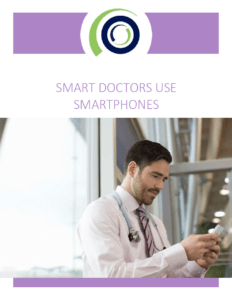Smart Doctors Use Smartphones

Why BYOD in healthcare is important
Technology is ever-changing but in healthcare, the adoption of new technologies is often slow. One good example is demonstrated by healthcare’s use of smartphones over pagers. Eight years ago, only half of doctors used smartphones for work.Today, that number has grown to a healthy 84% which while more robust than it previously was, is still not universal. Furthermore, it took over eight years to achieve that growth. In this blog we are going to look into the need to streamline healthcare communications and encourage hospitals to adopt BYOD in healthcare.
MOBILE DEVICES ARE THE FUTURE
The use of mobile devices such as tablets and smartphones by health care professionals (HCPs) has transformed many aspects of clinical practice. Mobile devices have become commonplace in healthcare settings, leading to rapid growth in the development of medical software applications (apps) for these platforms. Numerous apps are now available to assist healthcare professionals with many important tasks, such as: information and time management; health record maintenance and communications and alerting.
Mobile devices have been proven to improve contact between HCPs and their colleagues. In one study , mobile devices were shown to improve communication between doctors and nurses on inpatient wards. In a survey of medical school HCPs and students, more than 80% of respondents described using mobile devices to communicate with colleagues about patient care via e-mail, telephone, and text messages. They described texting as a more efficient means of communication than telephone conversations or in-person meetings.
Mobile devices also allow rapid response to e-mail, allowing users to keep up with communication. Texting or calling colleagues directly on their mobile devices, rather than paging them, has also been shown to save critical time in emergency cases. Mobile devices can also be used by HCPs to aid long-distance patients by allowing them to text or send pictures regarding problems or questions.
THE NEED TO STREAMLINE COMMUNICATION
The report, written by patient safety experts CRICO Strategies , looked at over 23,000 medical malpractice lawsuits and claims where patients suffered some form of harm. Out of all these cases, it identified over 7,000 cases where the malpractice was directly caused by miscommunication of certain facts, figures and findings. A lot of these errors were due to workplace culture. The CRICO cites a study that found more communication breakdowns occur among people who know each other than between strangers. The reason for this occurrence is that people think they can use shortcuts in how they express themselves because they assume the other party will understand.
If a hospital’s culture is prone to such breakdowns then keeping doctors accountable by transporting all communication to a few approved channels may be the ways to go. Hospital management can look into HIPAA compliant alerting and messaging services and have doctors adopt such technology with the aims of bringing communication to one place, giving doctors a respite from antiquated pagers and allowing them to use smartphones.
BYOD IS THE ANSWER
As noted in the introduction, doctors are already using smartphones. As such, hospitals need to consider whether they are going to be stumbling blocks to this reality or use the reality to their advantage.
In 2016 58% of hospitals had policies allowing BYOD (bring your own device), and another 5% are looking to create policies which allow this in the months to come. This means that over 35% had policies not allowing the use of personal cellphones. But as 85 percent of healthcare professionals are already bringing their own devices to work , creating further smartphone-friendly policies should be on the minds of administrators.
To learn more about the merits of using smartphones in healthcare, Download our white paper.






